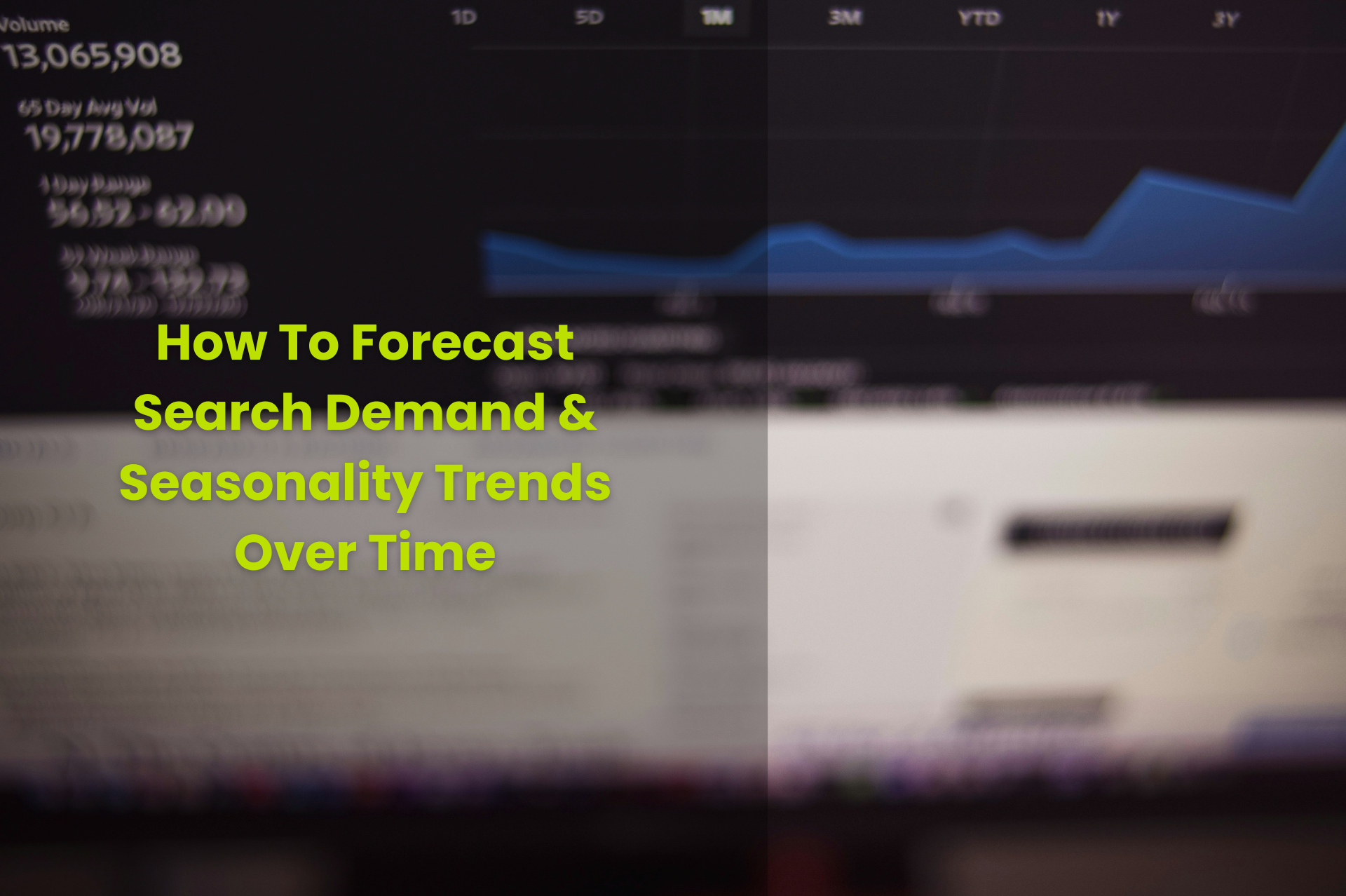Ad tracking is one of the most effective ways to measure your digital marketing campaign performance. As marketers, we can track data for each campaign we run through pretty much any platform, (Google, Facebook, search, display, etc.), to help us create better and more profitable campaigns. If you’re unfamiliar with this territory, or you’re dipping your toe into understanding how to use this information to improve your ads, let’s dive in.
Table of Contents:
What is Ad Tracking?
Ad tracking is how marketers test the effectiveness of the ad campaigns they run. Ad tracking helps brands research their digital performance and how their audience interacts with their brand and ad messaging versus how they interact with their competitors.
Ad tracking is the process of using data to measure ad performance. Advertisers collect data and user insights to track the performance of their online campaigns. Marketers are following clicks, impressions, conversions, etc. These ads can be measured in several ways, including tracking URLs, pixels, and cookies.

With any live advertising, it’s essential to think about the metrics you will use to determine the success of your campaign. Because ad tracking exists across various tools and platforms, advertisers can collect data on everything across multiple sessions and websites. However, the number of data advertisers have access to can be overwhelming, and without clear direction, it can be distracting from any advertising goals.
When running ads, it’s essential to keep your key performance indicators (KPIs) in mind. Take time to focus on at least two key performance indicators (KPIs) that you will use to determine the success of a campaign. Once you’ve selected the metrics you want to use, find the best ad tracking method for your goals. Of course, your ad tracking methods will vary based on where you run your ads and which tools you’re using. We’ll break down the types of ad tracking and when to use them below.
Types of Ad Tracking
Ad tracking is a bit of a broad term. There are various tools and platforms for tracking ads, but most methods include the following:
Tracking URLs
What is it?
A Tracking URL is a URL to a page on your site that includes a tracking tag at the end. The difference between a tracking URL and a traditional URL is that there is a code placed at the tracking URL so that when someone visits a website with a tracking URL, that information is captured.
When someone visits a website and clicks on a tracking URL, it tells analytic software about the visitor. A tracking URL helps advertisers determine who makes up most of their profitable audience.
Tracking URLs help advertisers and marketers measure the effectiveness of their marketing campaigns by providing information when visitors access their site through the URL. Essentially, a tracking URL is a standard URL with parameters attached, so when visitors visit your website through the tracking URL, your analytics software saves that information for future use.
Best for:
Tracking URL is best for ad campaigns on other websites, PPC, and email.
Tracking Pixels
What is it?
Tracking Pixels are one of the more common and easy pixels to implement. A tracking pixel places a small code snippet on your website. It’s common for website platforms like WordPress, or you can use a Tag Management solution like Good Tag Manager.
Tracking pixels are small, transparent HTML code snippets that advertisers place over ads. It is loaded when users visit a website or open an email. When customers click on these pixels, it tells the analytics platform that someone viewed the ad.
Tracking pixels allow advertisers to gather information about visitors on a website. For example, marketers can see how visitors browse, what they click on, how long they’re on the page, etc. This information helps the marketer decide what type of paid advertising to retarget the visitor with so that they click back into your website.
In addition, tracking pixels measure the performance of a campaign, tracks conversions, and builds an audience. Advertisers and marketers can monitor their online and email marketing ad data with a tracking pixel.
Best for:
Tracking pixels are helpful when advertisers are trying to determine the effectiveness of a particular campaign. Reviewing the pixel’s reporting communicates to the advertisers that they may need to change the copy, creative, platform, or targeting. In addition, a tracking pixel helps track user behavior and conversions.
Cookies
What is it?
Cookies are files within a browser that store user information like a user’s behavior, preferences, location, etc. If used effectively, cookies can be a great asset for both the advertiser and the user. For example, cookies allow advertisers to build personalized profiles on their visitors so that users can get more targeted and relevant content.
If used ineffectively, cookies can be annoying or creepy to the everyday user. However, if advertisers misuse cookies or don’t fully understand how to use them, they can violate customer privacy and can be illegal.
Cookies are small text files that websites save within the browser that contains data on you and your online browsing activity. There are two types of cookies: First-party and third-party.
First-Party Cookies
These cookies live on the site you’re visiting and are stored on the website. These cookies allow website owners to collect that data, remember language settings, and perform functions to provide a personalized user experience.
Third-Party Cookies
This type of cookie originates from sites you aren’t currently on. Third-party cookies, often called tracking cookies, follow users through their digital journey. Marketers will put a script on the advertiser’s website to track the shopper.
An example of third-party cookies is if a shopper browses Amazon and looks at a toaster, they’ll receive emails and other types of advertising about the toaster. In addition, users receive retargeting emails and advertising even when the shopper closes out of their browser and ends the session. So their tracking data will still be on their computer.
Best for:
Cookies are best for delivering personalized retargeting ads relevant to your past visitors. Cookies can appear on social media platforms and Google display ads.
The Purpose of Ad Tracking
So, what’s the point? Why do advertisers have all these methods to track the everyday user? The immediate benefit is that it allows you to understand how your ads perform. When you know how your ads perform, you can better utilize your advertising dollars.
Ad tracking can be so valuable for your business; here are three reasons to use ad tracking:
Audience Knowledge
As marketers, our audience is the driving purpose of our ad campaigns. When we understand our audience, we can answer questions like:
- What does your audience respond to?
- Where do they come from?
- What do they click on?
- What keywords are they interested in?
By answering those questions, we can create more robust campaigns.
First, you already know your audience, but there is always more to learn about our digital friends. It’s great that we already have a general idea of their interests, but through ad tracking, we can look at how they interact with our website and have a more in-depth look at their user profile.
Our audiences share valuable information through their internet behaviors, and we can use those behaviors to learn more about their demographics, engagement, buying habits, etc.
By understanding our audience and how they interact with advertising, we can work to deliver a more relevant ad experience. For example, if your ads aren’t resonating with your audience, you’ll be able to see it through your analytics. This information helps you track and understand your audience, and with that information, you can create more effective ads and more relatable content.
Personalization
Ad tracking allows you to understand your audience better and create more relevant ads and a more relevant ad experience. One of the biggest challenges we face as advertisers are creating content that resonates and makes sense for your audience.
As companies, we also believe we know our audience. But, while you do know you’re audience, they are still human and constantly changing. So by understanding your audience and tracking your ads, you can see what will create interest, and if it doesn’t, it’s OK because you can check your ads, pinpoint low engagement and tweak your advertising.
By ad tracking, marketers and advertisers can see how users engage without ads. We can understand which parts of our ad are gaining interest from our audience and what aren’t. Then we can use this information to learn more and work to deliver a more personalized ad experience.

Better Return on Investment
When we invest in anything, especially our digital marketing strategy, we want to see that money come back, whether it be through engagement, sales, leads, sign-ups, etc. We want to see a return on our investment.
When we have retargeting ads and pay attention to our ad tracking and how our ad campaigns are performing, we can increase the possibility of earning a good return on investment. In addition, ad tracking allows you to create a more tailored ad experience that customers enjoy, and they tend to revisit websites more frequently when it’s custom to them.
Audience knowledge, personalization, and return on investment all work hand in hand, and it starts with setting up the systems and creating a strategy to better track your audience. First, we want to take the time to learn about them and use that knowledge to create a personalized experience. Then, when you do your research and create relevant content, you’re more likely to earn conversions and engagements, leading to a return on your investment.
Ad tracking is a powerful tool in understanding your audience and generating more conversions. However, you can also combine Post-Click automation and reveal even more granular insights into areas of your advertising you never considered. Post-click Automation allows you to act on those insights with solutions for growing personalization and optimizing your campaigns.
You can optimize your campaigns by including ad tracking in your digital strategy and knowing your audience. Optimize existing campaigns to increase performance on those customer segments. Next, you can personalize your content. When you can differentiate what campaigns work best with different segments of your audience, you can make better decisions regarding what type of content to produce. The more data you collect, the better decisions you can make about what works for you and your audience, and you can tailor your message, offers, etc., to serve them better and have better engagement. Finally, when you optimize and personalize your advertising and have KPIs to measure your reporting against, you can use that information to allocate your budget more efficiently. You’ll understand where you need to invest more, less, or not at all.
Businesses can see how their marketing efforts and campaigns perform through ad tracking. You can explore how audiences interact and respond to your brand, whether you do this through a URL, Pixel, or cookie tracking. With ad tracking, advertisers can see where they can grow their business and where they should grow their business to improve user engagement and drive sales conversions.
However, if done incorrectly, ad tracking can be considered creepy as it involves a level of user behavior tracking. It is legal, but ad tracking is now being regulated due to growing concerns over user privacy.
Now, advertisers must adhere to the General Data Protection Regulation (GDPR) rules when collecting user behavior information for ad tracking. If done incorrectly, advertisers are at risk of severe financial penalties. If you’re interested in learning more about privacy, we recently wrote The Rise of Marketing Personalization – Can Privacy Co-Exist? where we expand on how to create targeted content without violating your audience’s right to privacy.
Ad tracking is a truly beneficial way to understand your audience and their browsing behaviors. Then, you can use that information to create a more tailored and user-friendly experience and grow your business.



